Students' building designs presented at Expo
What did you learn that will help in your future career?
Our senior design capstone project brought together everything we’ve learned over the past four years—from technical skills to teamwork, to communication, to project management. Collaborating with a team of six, we not only applied our engineering knowledge, but also honed our ability to communicate ideas clearly, listen actively and work effectively as a group. Writing proposals and presenting our work added another layer of professionalism. Seeing our final building and product come together affirmed how these skills will translate directly into our future careers—which is really exciting!
What did you enjoy most about this class?
I enjoyed collaborating with my peers. It was incredibly rewarding to share the excitement of completing our deliverables and presenting our ideas. Spending so many hours together brought us closer, and the camaraderie made the experience even more memorable!
Why are you participating in Expo?
We’ve presented to engineering professionals and faculty. Sharing our work with the broader public will be a new and exciting experience.
CU Boulder’s architectural engineering capstone students took on a challenge to design a 20,000-square-foot student support building. Their mission? Create a space for the Business Field on the university's main campus that fosters connection—housing student services, graduate offices, study areas and meeting rooms—while helping to frame the Business Field as a welcoming gateway to campus.
Six student teams tackled the same prompt and delivered six very different designs. They'll present their work to the CU and Boulder communities during the Engineering Projects Expo 2025, held April 25 at the CU Indoor Practice Facility.
The university has no current plans to use the students’ designs to construct the building, but that wasn't the point, said Jay Arehart, an assistant teaching professor and faculty director for architectural engineering. The project mirrors real-world constraints and expectations, offering students a hands-on experience in turning ideas into concrete solutions, he said.
Arehart leads the senior design class, emphasizing its pivotal role in his students' education.In earlier courses, students focus on designing individual systems, such as steel structures, he said. However, the senior design class challenges them to integrate these components into a single, cohesive building.
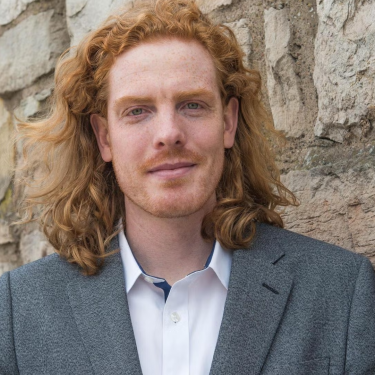
Assistant Teaching Professor Jay Arehart
"They're having to problem solve and work to balance the design objective of multiple disciplines," Arehart said. "They need to think about the lighting design, the cost of the different systems, the sustainability impacts. The class is about putting a whole building together holistically, not just designing a system in isolation."
During the capstone class, a panel of industry professionals gave feedback on students’ technical presentations at three key points during the academic year. Expo, he said, offers students a chance to present their work to a broader, less technical audience.
"Expo is a chance to give an elevator pitch about their design and not get deep in the weeds," he said. "Instead, they're zooming out and thinking, 'What does this project mean for this person asking questions?'"
Architectural engineers focuses on the design and construction of safe and sustainable buildings. They are creative problem solvers meeting the challenges of energy needs, building systems and community planning. While architectural engineers work with architects, they are engineers – not architects.
Team 1: Unified Engineers
Cindia Denova Garduno, Ammar Alqallaf, Colin Finnerty, Yousef Alqallaf, Daniela Brown and Jassim Almossallam
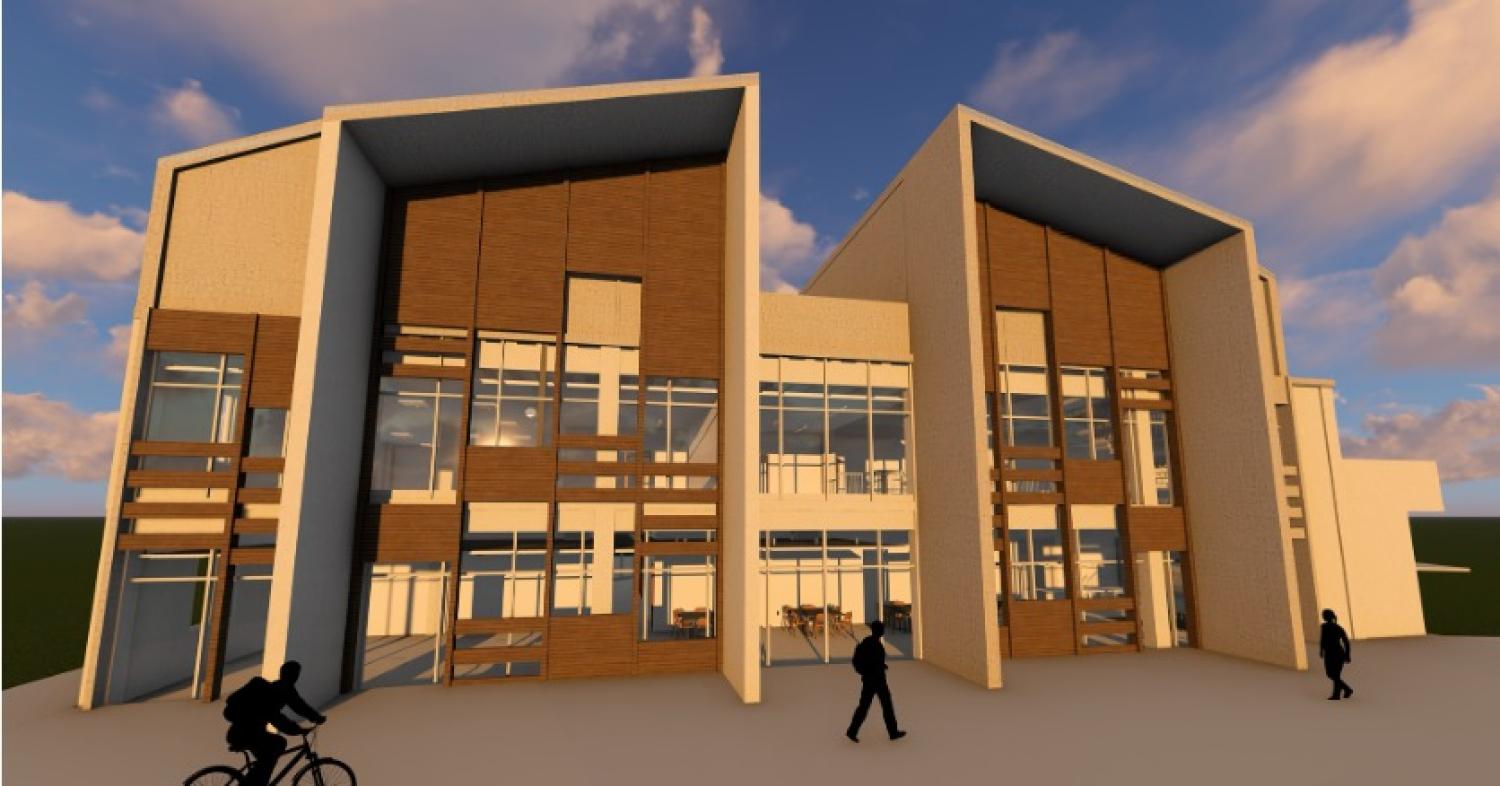
Description
To support the growth and dynamic needs of CU’s student community, the Student Success Center serves as a cornerstone of campus life-architecturally rooted by the iconic Flatirons and the surrounding Brutalist architectural style of the Engineering Center. Designed as a LEED Gold-performing faculty, it provides occupants with a comfortable indoor environment achieved through sustainable practices that align with CU Campus carbon reduction goals. The Student Success Center provides student-tailored spaces such as classrooms, meeting rooms, study spaces and a light-filled atrium that fosters collaboration, academic success and inclusivity.
Team 2: KWT Team 2024
Sarah AlRubaie, Maha Madooh, Sherifa Aldharman, Maryam Alfeeli and Sadan Almukhtar
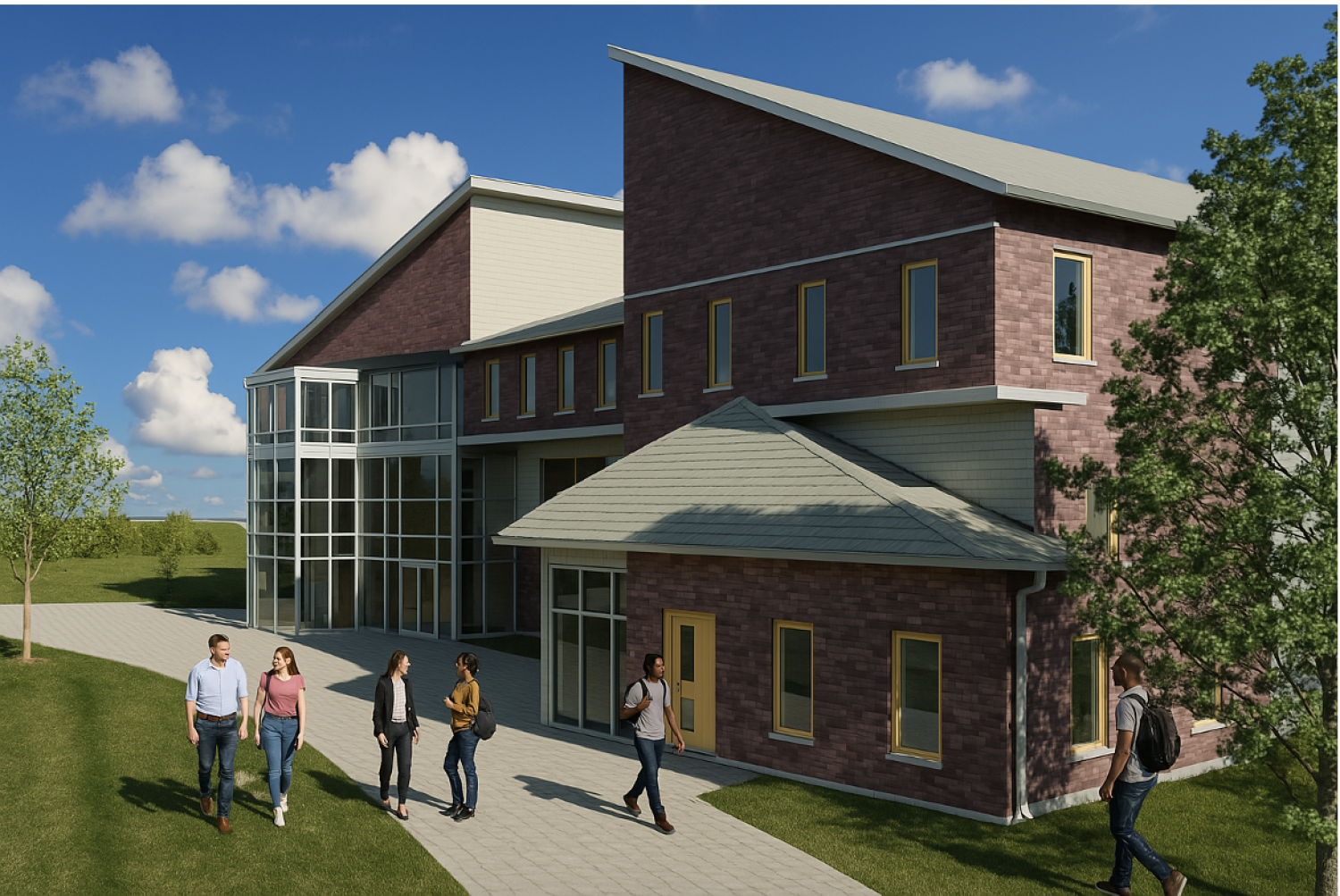
Description
Our building design creates a welcoming and functional community space that seamlessly blends aesthetics. The structure features a dynamic mix of traditional and modern elements, including a large glass curtain wall that maximizes daylighting and enhances visual connectivity between interior and exterior spaces. The sloped roof design and varying volumes help define different program areas while supporting passive solar strategies. Unique to our solution is the emphasis on openness and accessibility highlighted by multiple entry points, outdoor seating and a transparent atrium that invites collaboration and engagement. Our group’s goal was to foster inclusivity, promote natural light use and prioritize energy efficiency, resulting in a design that serves both environmental and social functions.
Team 3: C6C Design
Dana Majer, Macy Will, Ryleigh Taylor, Alex Pentecost, Lars Chang and Josh Kilareski.
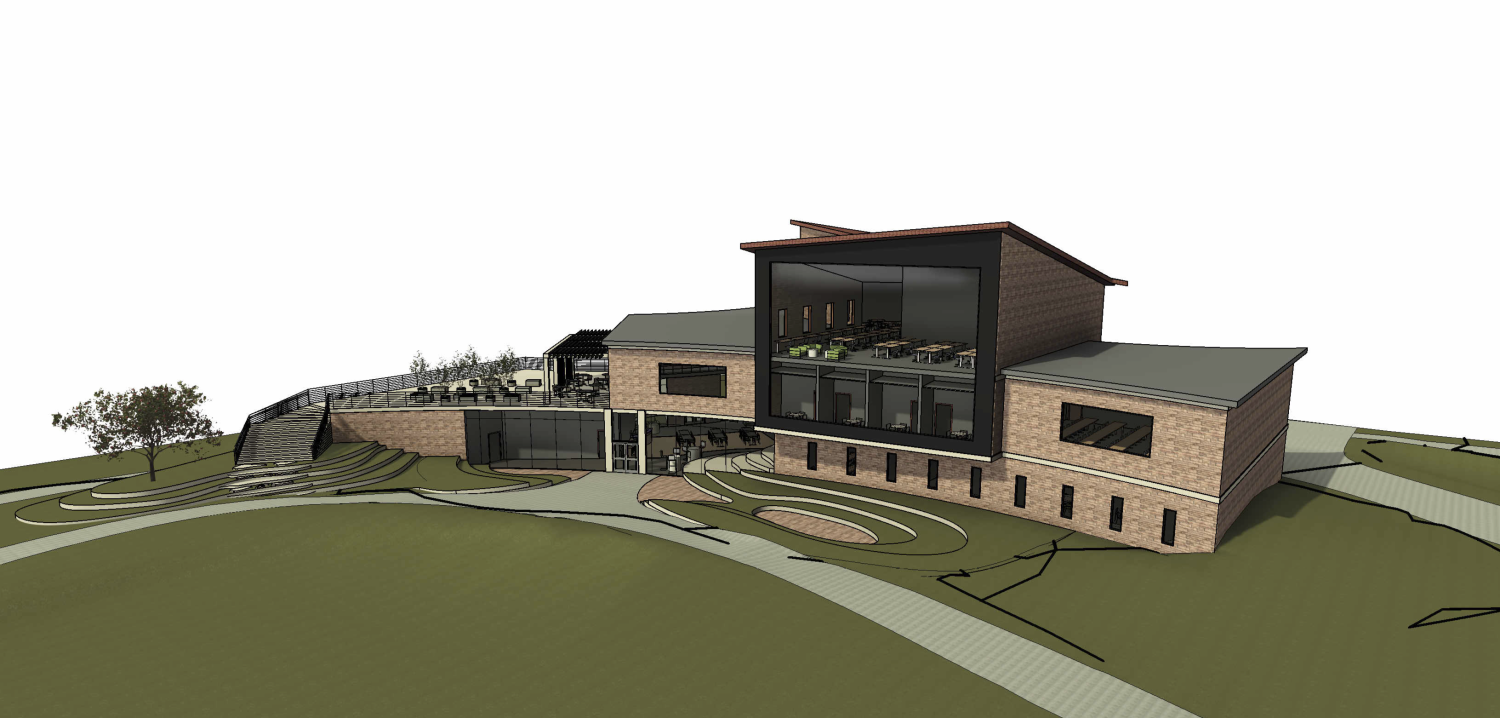
Description
Our 25,000-square-foot Student Success Center includes 10 classrooms, a variety of study spaces, an open atrium and an interior and exterior roof terraces to support students, staff and visitors. The design blurs the boundaries between the building and site, instructing and learning and tradition and advancement. The team worked to achieve LEED Platinum and low embodied carbon by considering a multitude of factors, including indoor air quality, materiality and optimized energy usage.
Team 4: Kuwait
Alaa Alnajar, Yaqoub Salem, Nourah AlTaher, Sarah Aldhafiri, Deema Alhouli, Shekhah Alkhudhari
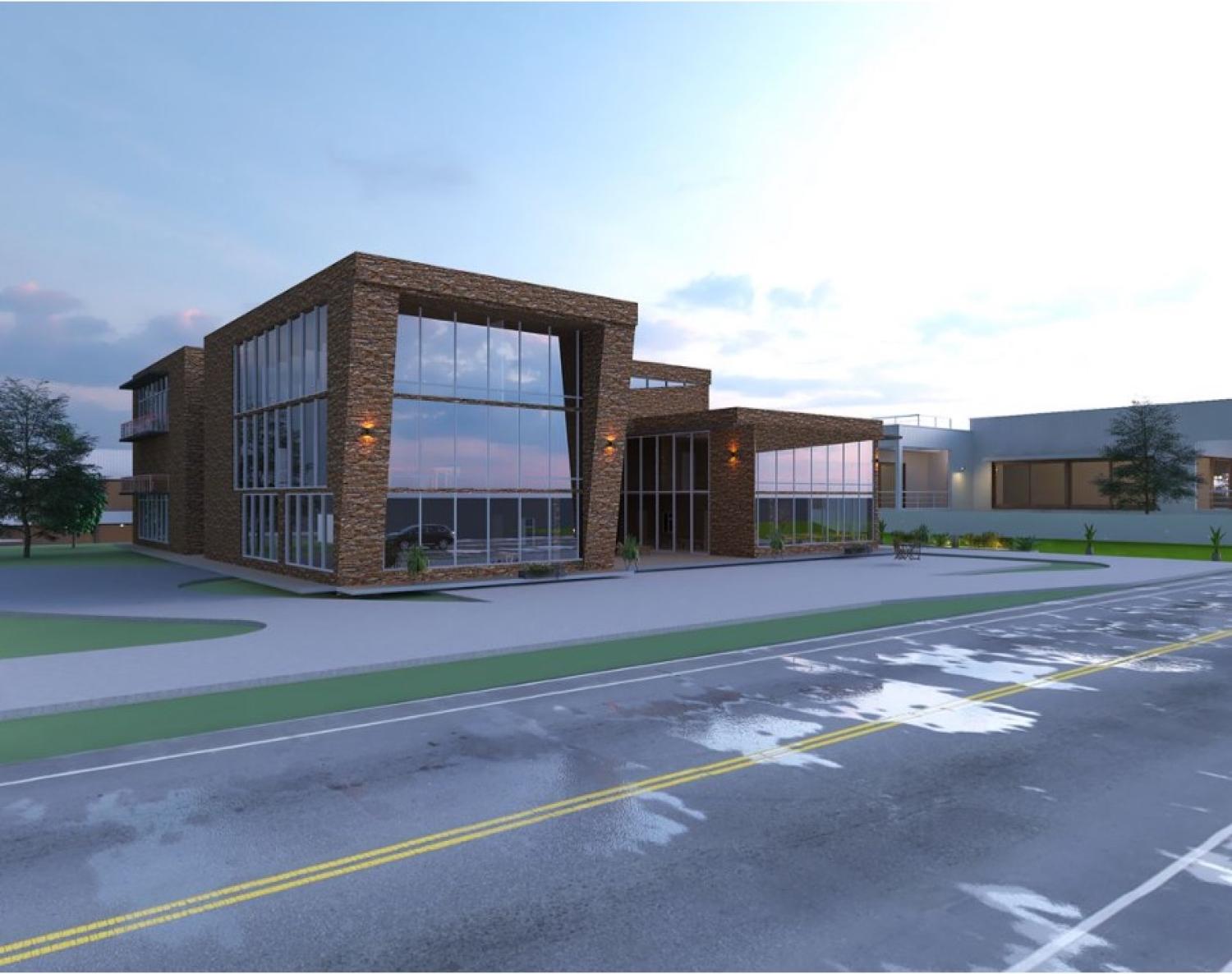
Description
Our 22,000-square-foot Student Success Center is designed to assist a variety of learning and interaction styles. The building includes 14 classrooms, four meeting rooms and two open study spaces. The exterior building maintains a modern aesthetic while using CU Boulder's characteristic sandstone to link the structure to the architectural identity of the university. Large glazing lets in natural light and provides stunning views of the Flatirons, providing a stimulating setting for students. The elevated bridge linking the two wings of the Student Success Center is a major distinguishing feature of our design, offering easy access between areas and improving the general user experience. The building's bold geometry, open circulation and careful integration of indoor and outdoor areas reflects our project objectives to promote student success, enhance community and honor the natural and architectural character of CU Boulder.
Team 5: Trussworthy Engineers
Brayden Gurien, Rebeca Perez, Kai Cunha, Cami Campbell, Maja Sakiewicz, Caroline Mumm
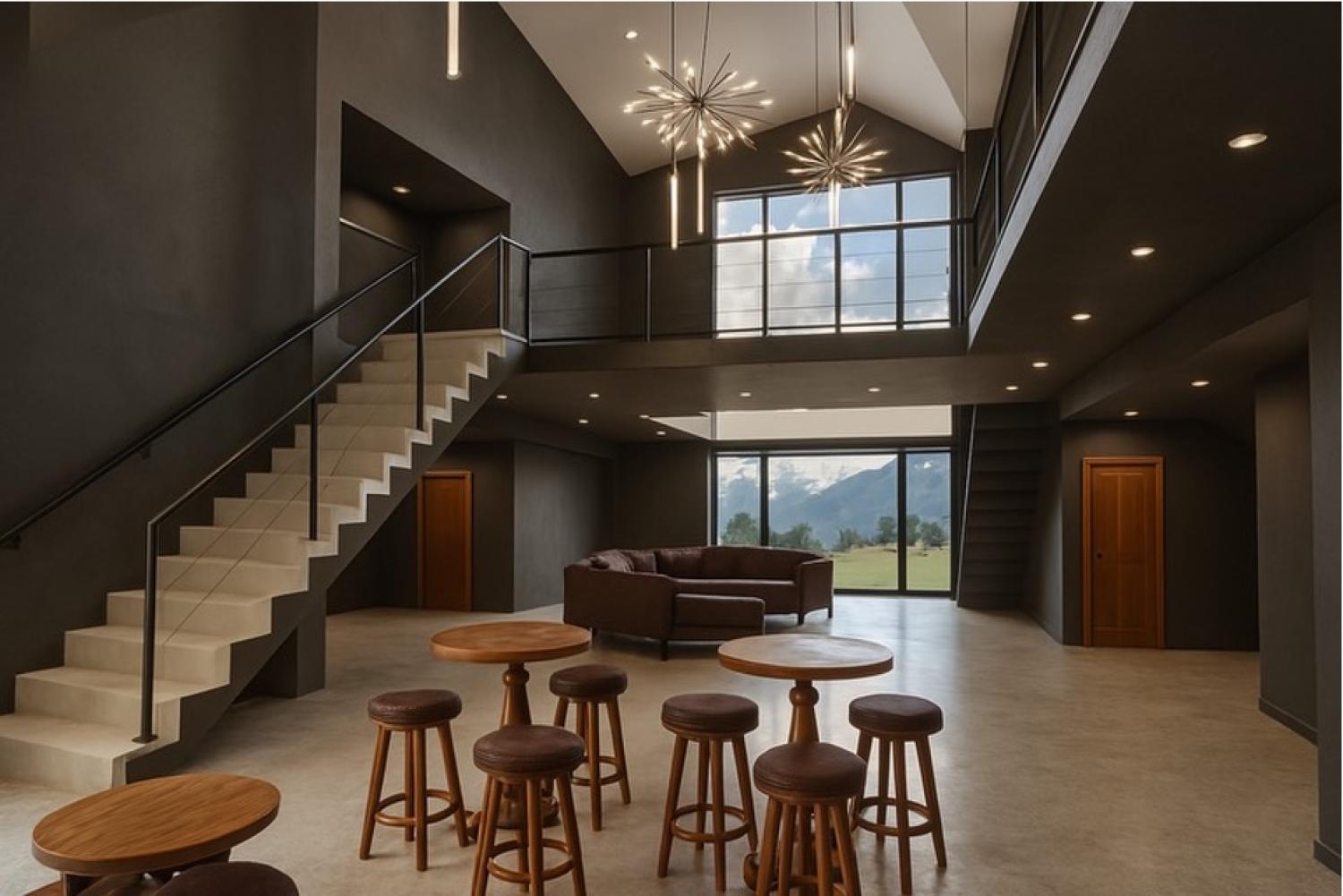
Description
The TRUS Building at the University of Colorado Boulder blends adaptability, sustainability and innovation through an integrated design process to meet the evolving needs of students and staff. Energy-efficient systems and sustainable materials used in the building align with CU Boulder’s long-term environmental goals, including LEED Gold certification and carbon reduction. Unique features like curved entrances, a central atrium and large windows framing stunning views of the Flatirons create a strong connection between the built environment and its natural surroundings. The TRUS Building also promotes inclusivity with all-gender restrooms, ADA-compliant facilities and wellness spaces. Designed for future expansion, it will remain a functional, innovative space for decades, offering a forward-thinking solution to the university’s needs.
Team 6: Six-Pack Drill Thrillers
George Kurz, Jason Pelzel, Gianni Carbonaro, Erik Eisenrich, Dominick Gomez, Kale Dohrman

Description
The Center for Learning and Innovation (CLI) Building is a proposed 21,000- square-foot classroom building with a central atrium branching to three stories of classrooms, offices and study spaces. The central atrium is a unique addition to the CU vernacular, providing a communal space promoting the intermixing of students. Steel columns rise from the ground 48 feet into the air and connect into the steel beams that support elevated concrete slabs on each story. Additionally, an overhang on the east end provides cover from the elements for students waiting for the CU buses on Regent Drive. The CLI’s structural systems will primarily be made with recycled steel where applicable and fly ash concrete to reduce the carbon footprint. Each classroom and building zone feature its own heat pump and temperature controls, ensuring maximum thermal comfort in each space any time of year. The lighting design features efficient and tasteful fixtures that improve the efficiency of the building and support the health of students.
Team 7
Sanbebablic Alnaser
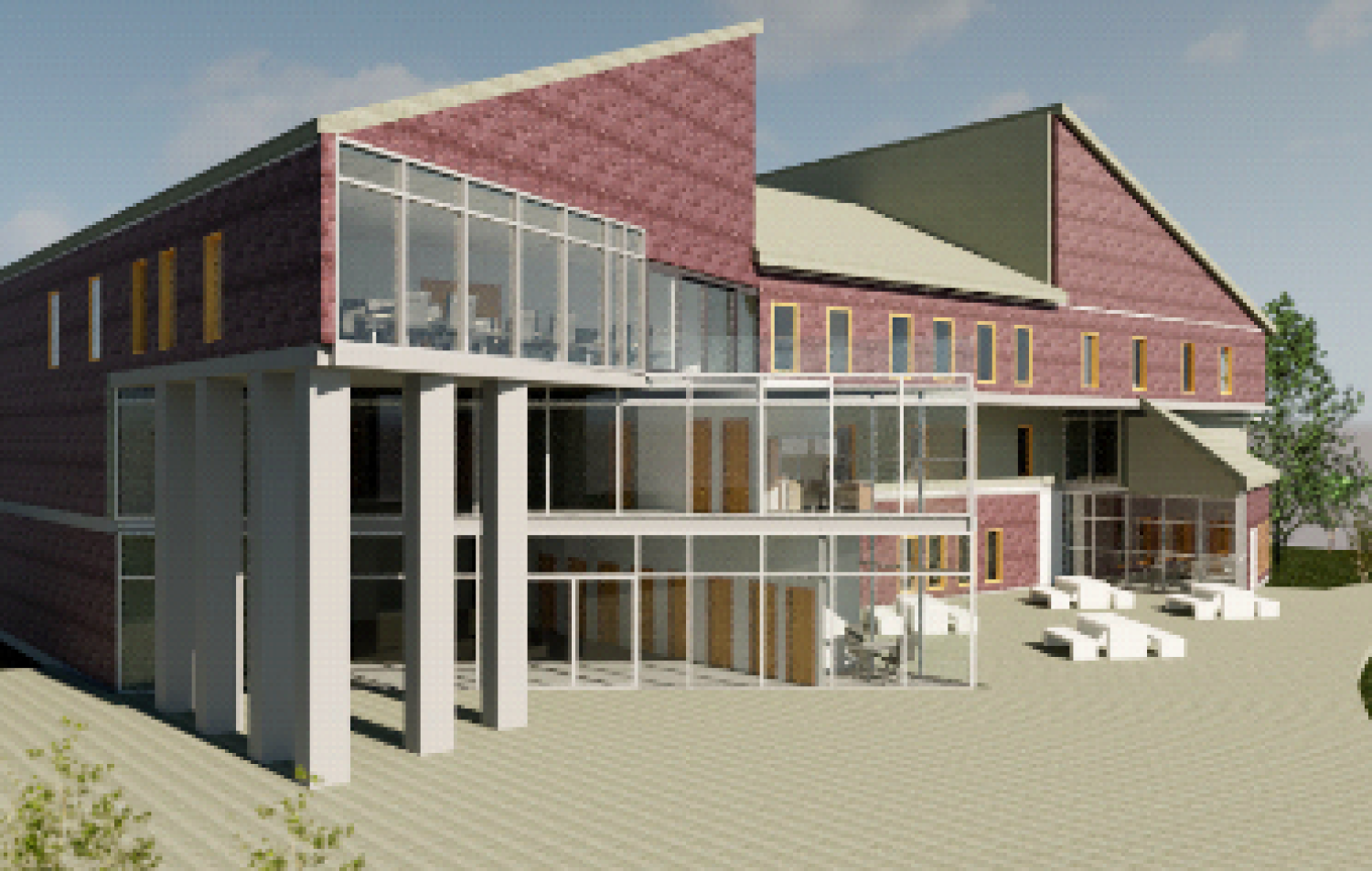
Description
Our goal was to design a building that blends with campus buildings and achieves LEED Gold certification. The building was planned with privacy and flexibility spanning three floors. The ground floor consists of 5,000-square-feet of south and west-side classrooms to accommodate 30 to 55 students, a 1,000-square-foot study room and an 800-square-foot lobby and reception space for easy access to the facilities. The second-floor accommodates 5,000-square-feet of classroom space for small groups, 1,500-square-feet of faculty office space and 500-square-feet of meeting rooms. The third floor has quiet study spaces with 1,500-square-feet and 4,000-square-feet for senior faculty and administrative offices and 500-square-feet of large meeting rooms. The structure is constructed using a reinforced concrete frame system for strength, flexibility and economy.


